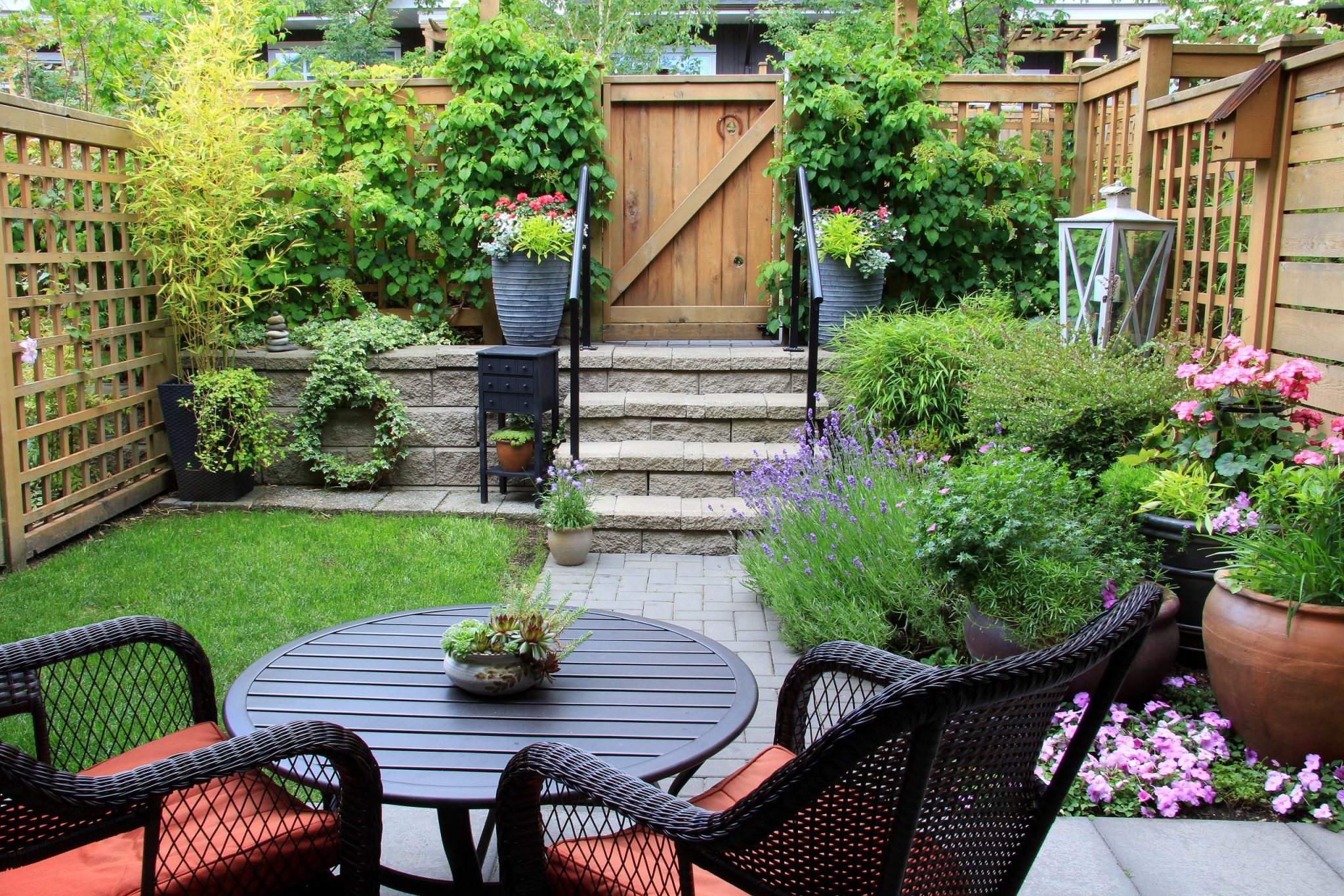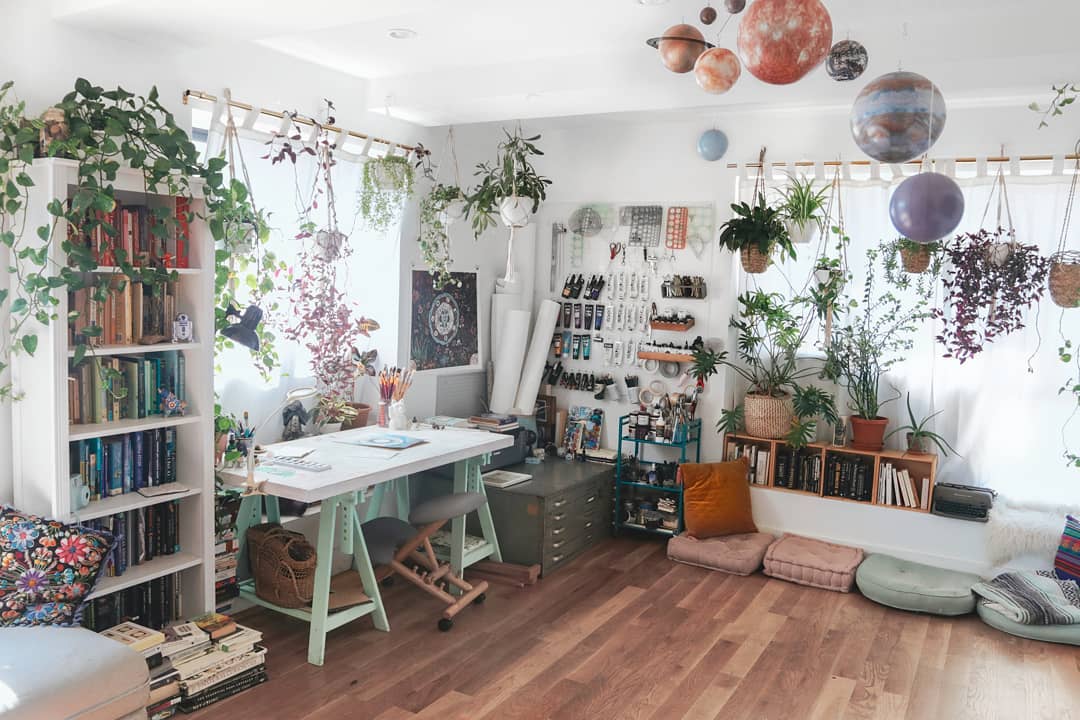June 22, 2023

Creating a stunning green space in your home garden allows you to connect with nature, enhance the beauty of your surroundings, and create a peaceful retreat. By incorporating natural elements, thoughtful design, and sustainable practices, you can transform your garden into a vibrant and inviting sanctuary. In this guide, we will explore ideas and tips for creating a stunning green space that celebrates the natural beauty in your home garden.
Embrace Native Plants
Choose native plants that thrive in your region and are well adapted to the local climate. Native plants require less maintenance and are more resistant to pests and diseases. They also provide important habitat and food sources for local wildlife. Incorporate a variety of native flowers, shrubs, and trees to create a diverse and ecologically balanced garden.
Create Colorful Flower Beds
Design colorful flower beds by selecting a variety of flowering plants with different heights, textures, and bloom times. Consider seasonal flowers to ensure year-round visual interest. Plan your flower beds with a mix of annuals, perennials, and bulbs to provide a continuous display of vibrant colors. Group plants with similar water and sunlight requirements for easier maintenance.
Design Inviting Pathways
Create inviting pathways that guide visitors through your garden and allow them to appreciate its beauty. Use natural materials such as gravel, stone, or wood chips to create pathways that blend harmoniously with the surrounding environment. Consider adding stepping stones or pavers to enhance accessibility and provide focal points along the path.
Incorporate Water Features
Integrate water features like fountains, ponds, or small cascades to add a sense of tranquility and serenity to your garden. The sound of running water can create a calming atmosphere and attract birds and other wildlife. Ensure that water features are well-maintained and balanced with the rest of your garden design.
Provide Wildlife Habitat
Design your garden to provide a welcoming habitat for local wildlife. Incorporate bird feeders, nesting boxes, or butterfly-friendly plants to attract and support a variety of creatures. Include diverse plant species to provide food sources, shelter, and nesting sites. Avoid using pesticides or chemicals that could harm wildlife or beneficial insects.
Sustainable Garden Practices
Adopt sustainable gardening practices to minimize environmental impact and conserve resources. Use organic fertilizers and compost to nourish your plants naturally. Install a rainwater harvesting system to collect and reuse rainwater for irrigation. Practice responsible water management by using efficient irrigation techniques and watering during cooler times of the day.
Create Relaxation Areas
Design relaxation areas within your garden to enjoy the natural beauty and serenity of the space. Install comfortable seating, such as benches, hammocks, or lounge chairs, in shaded or sunny spots. Add outdoor lighting to extend the usability of the garden into the evening. Create cozy nooks or outdoor dining areas to entertain guests and enjoy meals surrounded by nature.
Conclusion
Creating a stunning green space in your home garden allows you to immerse yourself in the beauty of nature and create a tranquil oasis. By embracing native plants, designing colorful flower beds, creating inviting pathways, incorporating water features, providing wildlife habitat, adopting sustainable practices, and designing relaxation areas, you can transform your garden into a breathtaking haven. Allow the natural beauty of your garden to inspire and rejuvenate you, and let it become a reflection of your love for the environment. Embrace the wonders of nature and create a stunning green space that brings joy, peace, and connection to your home.
Top Site
Posted by: Interior at
06:12 AM
| No Comments
| Add Comment
Post contains 609 words, total size 9 kb.

Maximized mini homes are a growing trend, offering innovative solutions for optimizing space in small shelters. Whether you live in a tiny house, studio apartment, or compact living space, there are creative ways to make the most of the available square footage. In this guide, we will explore strategies and design ideas to help you maximize space and create functional, stylish, and comfortable living environments in small shelters.
Multifunctional Furniture
Invest in multifunctional furniture that serves multiple purposes. Opt for a sofa bed or a daybed that can transform into a sleeping area at night and function as seating during the day. Choose coffee tables with built-in storage compartments or ottomans that can double as extra seating and provide hidden storage. Folding or extendable dining tables can save space when not in use.
Vertical Storage
Utilize vertical space by incorporating wall-mounted shelves, floating shelves, or bookcases. Install shelving units or cabinets that reach up to the ceiling, maximizing storage capacity. Use hooks or hanging organizers on walls or behind doors to hang coats, bags, and accessories. This allows you to keep the floor clear and makes the most of limited square footage.
Creative Room Dividers
Use creative room dividers to create separate zones and add visual interest. Utilize bookshelves, curtains, sliding doors, or folding screens to create defined spaces without the need for permanent walls. This can help create a sense of privacy and separate different functional areas within a small shelter.
Smart Storage Solutions
Incorporate smart storage solutions to keep your belongings organized and maximize space. Use under-bed storage containers to store seasonal clothing or bedding. Install hooks or racks on the back of doors for hanging towels, bags, or accessories. Utilize storage ottomans or benches with hidden compartments. Customized storage solutions, such as built-in cabinets or wardrobes, can be designed to fit specific dimensions and optimize space usage.
Light and Bright Colors
Opt for light and bright colors in your small shelter to create an open and airy feel. Light-colored walls, ceilings, and flooring can make a space appear larger and more spacious. Use mirrors strategically to reflect light and create the illusion of depth. Incorporate natural light by keeping windows unobstructed and using sheer curtains or blinds to allow maximum light penetration.
Streamlined and Minimalist Design
Adopt a streamlined and minimalist design approach to avoid clutter and create a sense of openness. Keep furniture and decor to a minimum, opting for clean lines and simplicity. Avoid excessive ornamentation and opt for functional pieces that serve a purpose. Clear surfaces and maintain a clutter-free environment to create an organized and visually spacious feel.
Outdoor Living Spaces
Make use of outdoor living spaces, such as balconies or patios, to expand your living area. Consider adding outdoor furniture, plants, and lighting to create an inviting extension of your small shelter. Outdoor spaces can provide additional room for relaxation, entertainment, and enjoying fresh air while maximizing the usable area of your living environment.
Conclusion
Maximizing space in small shelters requires careful planning and creative design ideas. By incorporating multifunctional furniture, utilizing vertical storage, using creative room dividers, implementing smart storage solutions, choosing light and bright colors, adopting a minimalist design approach, and making use of outdoor living spaces, you can create a comfortable and stylish living environment even in the smallest of spaces. Embrace the challenge of optimizing space and transform your small shelter into a functional and inviting home that meets your needs and reflects your personal style. With thoughtful design and strategic solutions, your maximized mini home will prove that size is not a limitation when it comes to creating a beautiful and efficient living space.
Recommended
Fotka.com
Atari.org
Phpooey.com
Ilyamargulis.ru
Projectbee.com
Imperial-info.net
Df-citroenclub.com.cn
Freegame.jp
St-marys.bathnes.sch.uk
Chdd-org.com.hk
Salonspot.net
Nyl0ns.com
Hudsonvalleytraveler.com
Urcountry.ru
Lp-inside.ru
Pyi.co.nz
Good-surf.ru
Lostnationarchery.com
Orbiz.by
Start365.info
Vodotehna.hr
Storyme.app
Tagirov.org
Posted by: Interior at
06:10 AM
| No Comments
| Add Comment
Post contains 641 words, total size 8 kb.

Home art plays a significant role in creating inspiring spaces that reflect your personality and evoke emotions. From paintings and sculptures to photographs and decorative elements, art adds depth, color, and visual interest to your home. In this guide, we will explore various ways to incorporate art into your home, creating inspiring spaces that uplift your spirits and ignite your creativity.
Showcase Statement Art Pieces
Make a bold statement by showcasing a prominent art piece as the focal point of a room. Choose a large painting, sculpture, or unique artwork that resonates with you. Place it in a strategic location, such as above a fireplace, on a prominent wall, or in an entryway. Allow the artwork to command attention and set the tone for the entire space.
Create Gallery Walls
Transform a wall into a gallery by curating a collection of artwork or photographs. Mix and match different sizes, frames, and art styles to create a visually captivating display. Arrange them in a symmetrical or eclectic pattern that suits your aesthetic. Gallery walls can be created in living rooms, hallways, staircases, or any other area that provides a blank canvas for your creativity.
Integrate Art with Functional Spaces
Merge art with functional spaces to infuse creativity into everyday activities. Incorporate art pieces in unexpected areas such as the kitchen backsplash, bathroom tiles, or even on custom-designed furniture. Use vibrant colors, mosaic patterns, or artistic motifs to transform these spaces into visually appealing and inspiring environments.
Embrace Sculptural Elements
Sculptures bring a three-dimensional aspect to your home and create visual interest. Place sculptures on pedestals, shelves, or coffee tables to add a touch of elegance and sophistication. Consider abstract or figurative sculptures that complement your overall design aesthetic and create conversation starters.
Incorporate Textile Art
Textile art, such as tapestries, wall hangings, or textile installations, can add texture and warmth to your home. Hang a large tapestry as a focal point in your living room or bedroom. Experiment with different textiles, patterns, and colors to create a unique and eye-catching display.
Curate Personal Art Collections
Curate a personal art collection that reflects your interests and experiences. Collect artwork from local artists, antique markets, or your travels. Display your collection throughout your home, showcasing different styles, mediums, and artistic expressions. Your personal art collection adds a layer of individuality and tells a story about your unique taste and journey.
Embrace DIY and Personalized Art
Unleash your creativity by incorporating DIY and personalized art into your home. Create your own paintings, collages, or mixed media pieces that reflect your emotions and experiences. Frame personal photographs or create a gallery of family portraits. Handcrafted art adds a personal touch and allows you to express your individuality in your home.
Conclusion
Art has the power to transform your home into an inspiring space that reflects your personality and ignites your creativity. Whether showcasing statement art pieces, creating gallery walls, integrating art with functional spaces, embracing sculptures and textiles, curating personal art collections, or incorporating DIY and personalized art, art brings life and vibrancy to your home. Embrace the beauty of art and let it inspire you in every corner of your living space. With careful curation and creativity, your home will become a haven of artistic expression and a source of inspiration for all who enter.
Healthyeatingatschool.ca
Marcellospizzapasta.com
Brambraakman.com
Luding.org
Etarp.com
Ittrade.cz
Thumbnailworld.net
Shop-rank.com
Dobrye-ruki.ru
Findingreagan.com
Gyo.tc
Openroadbicycles.com
Vstclub.com
Extcheer.com
Fondbtvrtkovic.hr
Muppetsauderghem.be
Dobrye-ruki.ru
Nevinkaonline.ru
Fudou-san.com
Taskmanagementsoft.com
Mientaynet.com
Spacehike.com
Ky.to
l2base.su
Ojkum.ru
Posted by: Interior at
06:08 AM
| No Comments
| Add Comment
Post contains 583 words, total size 8 kb.
30 queries taking 0.1111 seconds, 47 records returned.
Powered by Minx 1.1.6c-pink.









